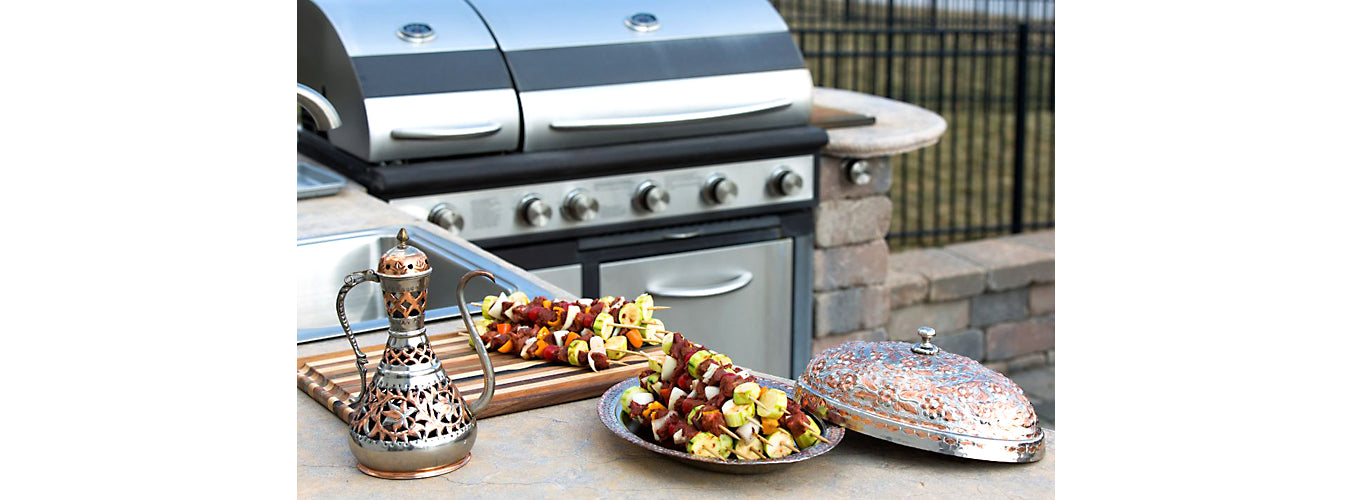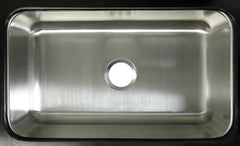Get PRO Pricing
Get [PRO] Pricing

There’s a reason the backyard cookout is a summer institution. The long, lazy summer days are the perfect time to enjoy cooking and dining al fresco in the backyard. It’s an ideal spot to gather with loved ones at the end of the day and spend time together in the glow of the sunset. For those who spend most of their time outdoors in the summer, installing an outdoor kitchen can be a great investment. Not only does it expand the home’s living space, but it also keeps food smells out of the interior rooms.
A charcoal grill on a patio is sufficient for many people, but an outdoor kitchen has many more benefits than a fun place to cook food. It doubles the kitchen space, creating room for multiple cooks to prepare meals together. It can also lower energy costs since you won’t be generating heat inside the house, which makes the air conditioner work harder on hot summer afternoons.
As with any kitchen space, the sink is the center of attention. It serves the same purpose as the sink in your main kitchen, but it has to hold up in outdoor conditions. When choosing a sink, it’s important to find one that is durable, easy to maintain and works with the plumbing, electricity, and space available in the outdoor kitchen area.

An outdoor kitchen should be able to withstand being outside 24 hours a day, sometimes with no protection from the elements. Stainless steel and granite composite sinks both do just that. Both of these materials are rust-resistant and non-porous, and a stone composite has the added benefit of being heat-resistant. When choosing a stainless steel sink, pay attention to the gauge. A lower gauge is thicker, which tends to be more durable.
The point of having an outdoor kitchen is to spend more time having fun in the backyard. No one wants to spend extra time cleaning. Keep in mind that cleaning an outdoor sink doesn’t only mean rinsing away food debris and scrubbing stains. Sticks, leaves, and dirt can collect in the sink — sometimes, they sit there for days. Both stainless steel and granite composite sinks are easy to clean and don’t require extra attention, but stainless steel may be a better choice.

Most sinks come with one or two basins and may sit on top of the counter or under the counter. A single basin sink is great for scrubbing large pots, and a double basin sink is handy for keeping clean and dirty dishes separate. If the outdoor kitchen sink doubles as a utility area, a single basin sink may be more useful since it offers more space. They tend to cost less than double basin sinks and may be easier to install. This also applies to top mount sinks that slide into the opening of the counter.
The location and arrangement of the outdoor kitchen is another factor to keep in mind. Stainless steel sinks with a shiny finish reflect the sunlight. If the sink is out in the open, the reflection can make it difficult to work when the sun shines its brightest. A completely exposed sink is also more likely to collect outdoor debris in the basin and may receive visits from animals at night. These are less important factors if the sink is on a covered patio or has some shade.
When selecting an outdoor sink, consider how the faucet will pair with it. Think about how you plan to use the outdoor sink, what you want to cook outside, and the physical space you have to work in. These factors can help you choose the features that give you the style you want with the practicality you need.

A single-handle faucet is convenient when you need to turn on or adjust the water while holding a pot or cooking utensil, but a double-handle faucet may give you more control over the temperature. Consider a pull-down or pull-out faucet with a built-in sprayer so you can reach all the corners of the sink or fill pots that aren’t directly under the spout. More importantly, pay attention to the faucet's size and ensure the openings in the sink are the right size and shape to accommodate the faucet of your choice.
Choosing the faucet style is a personal decision, and in many cases, you can go with the one you like best. Outdoor kitchens typically don’t have the same physical limitations as an inside kitchen. You’re less likely to have cabinets overhead. This allows more room to accommodate the faucet. A tall faucet that elegantly arches over the sink is beautiful and convenient. You can easily work under the running water without maneuvering the pans or utensils under the spout. If you don’t have a built-in sprayer, you may prefer a faucet with a lower profile or a pot filler that extends farther across the sink.

When choosing a finish for an outdoor sink faucet, it’s helpful to consider the finish. The finishes used on fixtures tend to be durable. Even in an inside kitchen, they have to hold up to the water, cleaners, and food debris. However, it’s easier to control those factors inside — no one decides when it will rain or how hot it will be outside. Shiny polished chrome or brass looks beautiful, but you may have to spend extra time cleaning it to keep the sheen. Oil-rubbed bronze adds an elegant, vintage touch, but the weather elements can interfere with the protective coating. You may find a brushed finish just as attractive and easier to maintain over time.
The product line at Kingston Brass includes a variety of sinks and faucets you can install in your outdoor kitchen. Explore the collection of kitchen sinks, including top mount, under-mount, and prep sinks, to find the style, shape, and size that completes your outdoor kitchen.
